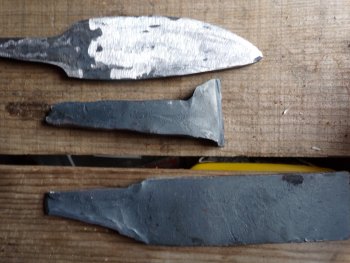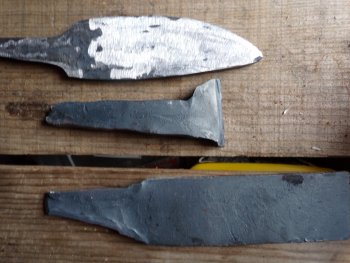I think I've been forging at borderline low temperatures had a couple of questions. Correct me if I'm wrong but does cold forging create stresses in the steel? I was also wondering if it is acceptable to straighten at a black heat or does that also create stresses?
Are stresses in the steel potential areas of weakness in the blade after heat treating? And say there were any stresses, can they be cycled out in thermal treatments before hardening?
Another issue was if I did forge the narrow tang and the points at too low heat will it create a void or empty spot or something like that? This steel is 1.5" wide. I think what I'm imagining would be something like a "cold shut" but I'm not sure if that name only refers to welding.
Are stresses in the steel potential areas of weakness in the blade after heat treating? And say there were any stresses, can they be cycled out in thermal treatments before hardening?
Another issue was if I did forge the narrow tang and the points at too low heat will it create a void or empty spot or something like that? This steel is 1.5" wide. I think what I'm imagining would be something like a "cold shut" but I'm not sure if that name only refers to welding.



